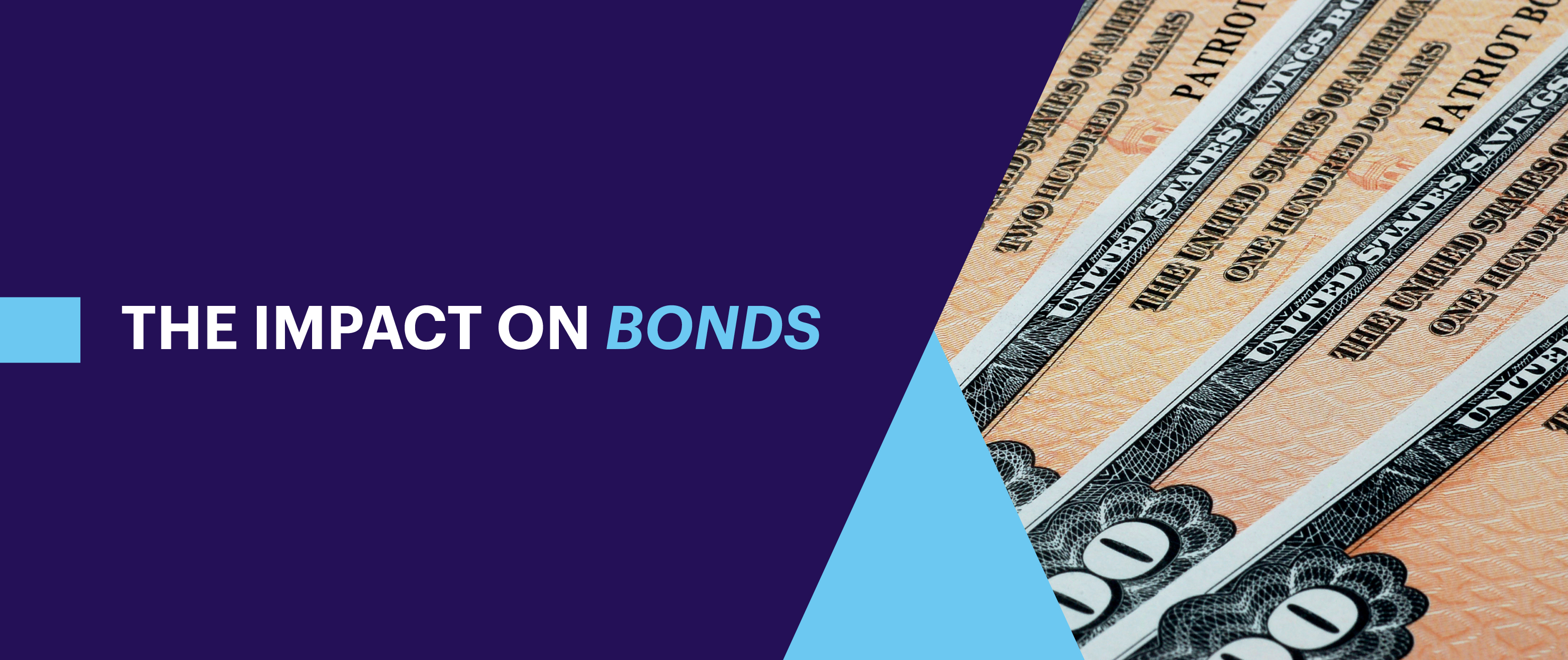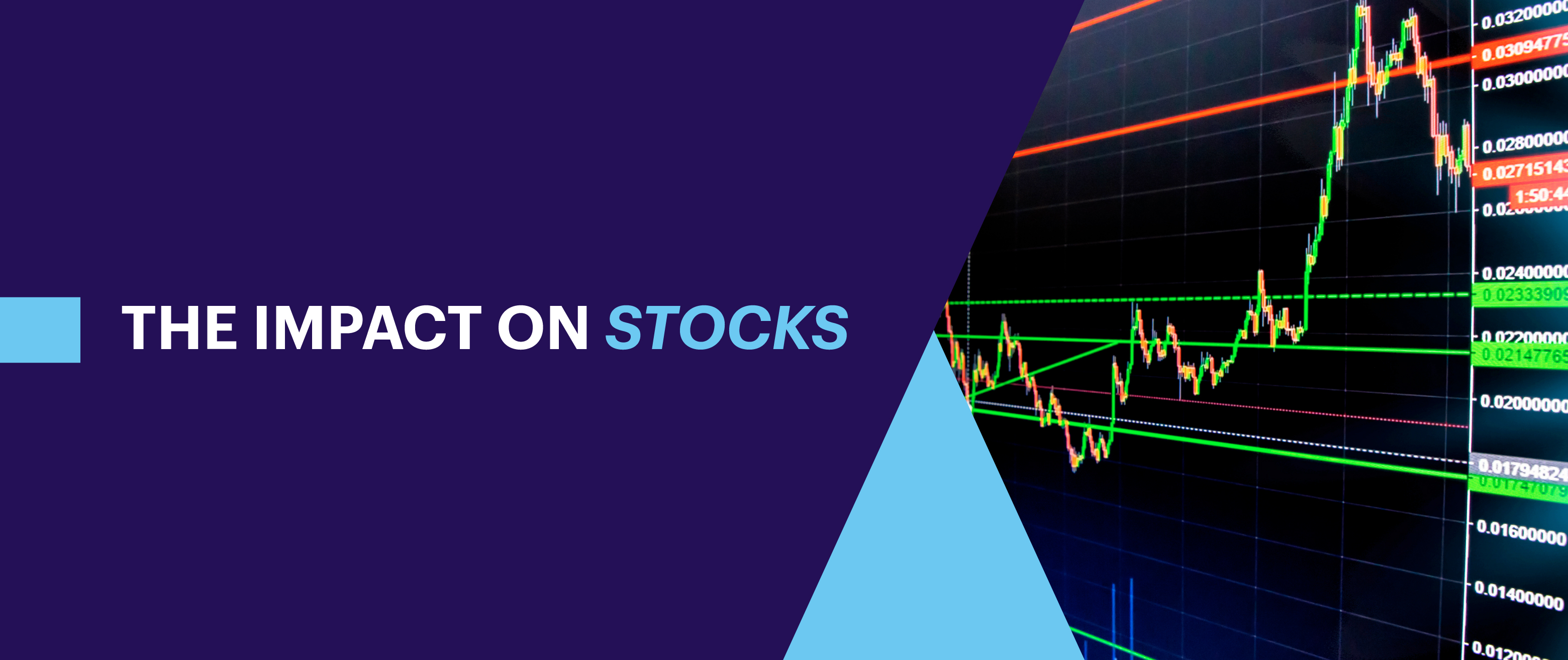Investing amid rising rates: What to know
Morgan Stanley Wealth Management
08/25/22Summary: After two years of near-zero interest rates, the Federal Reserve’s aggressive policy pivot has changed the market outlook. We break down the effects on bonds, stocks, and portfolios.
Since March, the Federal Reserve has been hiking interest rates to beat back uncomfortably high inflation. More work likely remains: Morgan Stanley Research’s US Economics team forecasts the personal consumption expenditure price index, a closely watched inflation measure, will end the year near 5.0%.1 The Fed prefers to see it around 2%.2
The Fed needs to manage a delicate balancing act. Hiking rates too high too quickly could tip an already cooling economy into recession. On the other hand, not raising them enough may perpetuate higher prices that have been weighing on consumers and companies.
Higher interest rates mean it is more expensive to borrow money—from mortgages to auto loans to credit cards. Businesses also pay more to borrow the money they need to grow their operations. That's why, in response to rising rates, both consumers and businesses tend to rein in their spending. This slows economic growth, and eventually, lowers the prices of goods and services.
With the Fed poised to continue rate hikes through the remainder of the year, we break down what it typically means for the markets and how investors may want to think about their portfolios.

The Fed sets the federal funds rate, which is the interest rate commercial banks charge each other to borrow money for a very short term—usually overnight. Typically, when the federal funds rate rises, it nudges interest rates for other bonds higher as well. And when interest rates go up, bond prices tend to fall.
The effect isn’t the same across the board. A bond’s sensitivity to interest rate changes depends on various factors, including its maturity date and coupon. Generally, bonds with long maturities and low coupons are more sensitive to changes in interest rates. For investors looking to sell a bond before it reaches maturity, a rise in rates may mean they need to sell at a discount to face value to compete with newer, higher yielding bonds coming to market.
However, for investors who buy and hold individual bonds to maturity—this is important—higher interest rates don’t matter much. After all, the market price of a bond doesn't matter if you’re not selling—you will still receive your principal back at maturity, as long as the issuer doesn’t default.
For investors whose primary objective is income, rising rates mean some areas of the fixed-income space may offer attractive yields. Higher yields also make bonds more attractive relative to riskier assets like stocks.

All else equal, rising rates tend to weigh on stock valuations, as they can drag on corporate profits and growth potential. This effect often plays out in anticipation of Fed action. As investors saw during the first half of the year, stocks fell from their peaks as the Fed was just beginning its rate hike campaign. Still, different areas of the market may react differently:
- Growth stocks: When interest rates are trending higher, it can clip the wings of pricey growth stocks, whose valuations are predicated on future returns. When rates go up, it instantly raises the bar on far-out profits needed to justify today's stock prices.
- Dividend payers: With bonds now offering investors potentially higher coupon rates and less risk, dividend payers may need to increase their yield to compete. Higher interest rates can also pressure corporate profitability and, thus, make it harder to pay dividends, particularly for heavily-indebted companies.
- Financials: The financial sector is one area where higher interest rates may serve as a tailwind since lenders can potentially earn more on loans. Historically, banks and financial institutions have outperformed the S&P 500® during periods of rising rates.

Against a backdrop of persistent inflation, geopolitical turmoil, and market volatility, investors may feel like they are navigating unfamiliar waters as the Fed aggressively tightens policy. Consider:
- Strategic bond investment. Fixed income remains an important part of a well-diversified portfolio. Bond laddering is one way to control the amount of exposure investors have to rising rates, while diversifying bond holdings.
- An actively managed strategy. Market indexes like the S&P 500 have become dominated by a handful of mega-cap growth stocks, creating concentration risk for investors whose portfolios are heavily allocated to passive index funds. Actively managed funds are designed to outperform market benchmarks.
- The importance of diversification. Diversification is essential in this market environment. Make sure portfolios are balanced across sector, region, and market capitalization.
As the Fed adjusts its policy to manage economic challenges, there are bound to be bumps along way. Keep a long-term perspective, and make sure portfolios stay mapped to individual goals, timelines, and risk tolerance.
- Morgan Stanley Research US Economics, headline PCE forecast for December 2022, as of 8/25/22
- Board of Governors of the Federal Reserve System, “Why does the Federal Reserve aim for inflation of 2 percent over the longer run?” 8/27/20
How can E*TRADE help?
Need help getting started with bonds?
To get started with bonds, visit our comprehensive Bond Resource Center. Use our Advanced Screener to quickly find the right bonds for you. Or call our Fixed Income Specialists at (877-355-3237) if you need additional help.
Thematic Investing
Find ETFs that align with your values or with social, economic, and technology trends.
Review your portfolio’s performance
Use our interactive charts to view your rates of return over various time periods and compare your portfolio against multiple benchmarks.
Morgan Stanley's Thought Leadership
Investment research and market analysis from Morgan Stanley's highly respected analysts, strategists, economists, and portfolio managers.